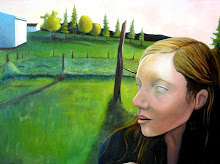Jim likes to take his interns to various historic sites throughout the summer in order to see how other sites interpret history to the public. Today I will just be writing about the experience and then later in the week I will hopefully be posting some pictures. I just got all of the photos onto facebook and don't really feel like dealing with them anymore.
Valley Forge is a basically a mix of different memorials from many different eras, and in many ways they say a lot about the national discourse and feeling toward Valley Forge. There are rangers and other staff on site that interpret the buildings for the public, and one can learn a lot by taking advantage of all the educational oportunities there. The most modern addition, the welcome center, gives a comprehensive view of the encampment that touches on its wider social implications.
As you drive around Valley Forge you will see different structures scattered throughout the park. You will probably first come upon the reconstructed log cabins, which were constructed in two eras. The first were created when the PHMC operated the site in the 1970's. They based their constructions on acheological evidence. The cabins are low to the ground and are built atop pits, much like the soldiers who were hard up for lumber were doing at the actuall encampment. The other cabins were built once the NPS took over. They are built to the specifications that Washington gave to the soldiers, but they are a little less rustic looking. The chinking is cement; they are a little too perfect. Next you may come upon some redoubts built up from soil, some have cannons behind them. If you drive around long enough you will also find the triumphal arch. This thing is huge and based on the one in France. This to me was a little over the top. I am not sure when it was constructed but it was rebuilt in the 1990's with money from the Freemasons.
There are a lot of ways to learn about the history asociated with the site. The buildings that have been preserved or reconstructed are interpreted by rangers or other staff, some of whom are in period garb. Some of the rangers don't say too much, but some are willing to talk, answer questions, even start converstations with you. I talked to one ranger who had been a history major in college and had worked his way up in the system of the NPS. First he was seasonal, then part time, then full time. He was in Vermeer's quarters and he told me a little about the history of the house, and about the people who had lived there when Vermeer took up residence. Apparently they were quakers, but they didn't have too much choice in the matter, it was either let the army move in or lose the whole house. The interpretive staff in garb was also very helpful. There was one man stationed at the door of Washington's HQ who told us who was living in the house with Washington and who was sleeping where. There were also interpretive staff at the cabins talking about the camp life of the soldiers.
The welcome center was an interesting place. The collections at Valley Forge are apparently quite extensive, but only a few object are put on display. The displays are basically wall displays with artifacts in cases. The labeling system for the objects consists of a sheet of paper on the side of the case that you can look up and match the picture of the object and learn about it. The displays are divided up thematically with topics like, ethnic and religious groups, women, medicine, camp life, cooking, weapons, von steuben, washington etc. You can learn and see a great deal before you actually drive the site just by looking through the visitor's center.
I am going to need a lot more space to write about everything I saw at Valley Forge Today!
Subscribe to:
Post Comments (Atom)


No comments:
Post a Comment